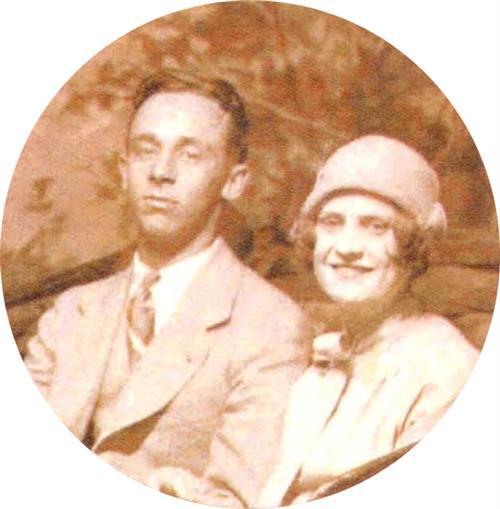Sign up for the Family Tree Newsletter Plus, you’ll receive our 10 Essential Genealogy Research Forms PDF as a special thank you!
Get Your Free Genealogy Forms
"*" indicates required fields

Covered with mail in my family’s dining room is a square table with fold-down sides and four chairs with needlepoint seats. In the tables hidden drawer, we discovered a note written long ago by the previous owner, my husband’s grandmother. “Every natural opening bid produces three tricks under most any circumstances,” wrote Dorothy (Miller) Lyon McNamara in her bridge notepad. She had often played bridge at this table, and kept her strategies and secrets hidden inside. Our discovery revealed just one of many stories in the life of this simple table-and-chair set, a prominent heirloom in the history of three families. If you own any furniture more than a generation old, take the time to gather stories about it from family members. You’ll be amazed at the tales hidden in an old table, chair or cabinet. When I interviewed family members about this piece, a love story unfolded.
When Dorothy Miller of Rochester, NY, married Stanley Lyon of Boston in 1928, her mother presented the young couple with the table. (Some members of the family disagree and think that piece came from the Lyons. You, too, may find the true origins of a piece of furniture have been lost or garbled over the years.) The young married couple used it as a dining table for themselves and eventually their two children. Later, they purchased a set of eight chairs to go with it. Dorothy’s daughter recalls that throughout her childhood, her mother patiently created needlepoint seats for each chair. When someone noticed her work, Dorothy would say it took her eight years to finish those seats. Even today, the signs of wear suggest the order in which she completed them.
In the 1930s, the Lyons divorced. Dorothy and her children moved to an apartment in Boston with the table and chairs. She remarried a few years later and the table continued to be used for meals until Dorothy and her new husband, Gilbert McNamara, purchased a house with space for a larger table. The smaller piece became part of the living room furniture. It was perfect for bridge games or, with the sides folded down, just the right size for a lamp.
Unknown to Dorothy, her young son used the hidden drawer and crevices in the table to hide the lima beans he hated (and his mother loved) whenever she served them for dinner. As time passed he forgot about the beans, and both children left home and married. When Dorothy’s second husband died, she left her home for a retirement community. As she carefully selected furniture for her one-bedroom apartment, the table was a natural choice. It was a symbol of her marriage to her first husband and a gift from her mother, both long deceased. As her children helped her manage the transition, movers came for the furniture. As they carried the table to the moving van, a trail of dried lima beans appeared. It was a stunning moment for the middle-aged son and his elderly mother!
In her new residence the table once again became the center of activity. She used it for dining whenever her children visited, much as she had in their early years. Between visits, she used it to play her beloved game of bridge or as an end table.
As she aged, the man she once called “the love of her life,” Stanley Lyon, began to dominate her reminiscences. Perhaps it was the presence of her grandson, who was the same age and looked strikingly similar to the man she married as a young woman of 22. As she looked at the old table and sat with her two children, she could imagine the empty seat occupied by the ghost of their father. When she died, the table was handed down to the grandson who so reminded her of her early life, along with four of the eight chairs. The remaining four chairs went to her son.
As you look around your house or that of your relatives, don’t forget to seek out the stories associated with furniture that’s been handed down, no matter how small or large, simple or ornate. Those stories may give life to your family history and bring you a new understanding of your relatives as people beyond the simple facts of birth, marriage and death. For tips on oral history interviewing, see the April 2000 issue of Family Tree Magazine. Who knows what tales you’ll uncover?
From the February 2002 issue of Family Tree Magazine
ADVERTISEMENT

